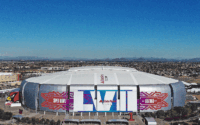CDC’s COVID travel map shows US is one of the riskiest to travel
Traveler beware.
A map depicting the risk of COVID-19 in countries across the globe from the Centers for Disease Control and Prevention shows the US is one of the most perilous places to visit amid the pandemic.
The map shows the risk of contracting the virus in each country and ranks locales with available data in four categories — low, moderate, high and very high risk. The CDC arrives at each determination primarily by calculating the incident rate of infection and new case trajectory over the last 28 days.
The US has a Level 4 “very high” designation as the Delta variant continues to sweep through the country but so does a far reaching swath of other locales spanning a variety of income levels, vaccine availability and public health systems.
For example, Somalia also has a Level 4 designation but only .07 percent of their total population is fully vaccinated, according to global vaccine tracker Our World in Data, compared to the US, which has about 53.6 percent of all people fully inoculated, CDC numbers show.

Mexico, on the other hand, is a Level 3 designation but has about half the inoculation levels the US has.
“If you look at the countries that are level four, there’s a wide variety of kinds of countries, you have countries in Western Europe, you have South America, you have some in Africa, it’s not just high-income countries, it’s not just low and middle-income countries, it’s really a complicated equation to sort this out,” said Dr. Isaac Weisfuse, a medical epidemiologist from Cornell University Public Health and the former deputy commissioner of New York City’s Health Department.

“[This map is] telling us that there’s many factors that go into the spread of the virus including behavior, variants, population density, [climate, testing] and there are probably issues we just don’t know about.”
He noted some countries that have low risk designations could be testing less and the CDC can only calculate the risk designations based on available data.
Given the US’s abundance of available doses and the ease Americans across the country now have to access them, Dr. Wafaa El-Sadr from Columbia University said vaccine hesitancy is what’s keeping the US at a Level 4 designation — but it’s playing a part elsewhere, too.
“People believe that vaccine hesitancy is only seen in high resource countries but it’s alive and well elsewhere,” the epidemiologist explained, pointing to countries like the Democratic Republic of the Congo and Iran, which also have Level 4 designations.
Still, vaccine access continues to be an issue in the developing world, especially in Sub-Saharan Africa, and a lot of work needs to be done to bridge the gap, El-Sadr said.
“These vaccines can be game changers, they can be our pathway to leaving this epidemic behind us, both in this country and around the world but that means we have to make sufficient vaccines for us and the rest of the world,” she said. “And we have to work very hard to get people to seek vaccination and get vaccinated as soon as possible.”


